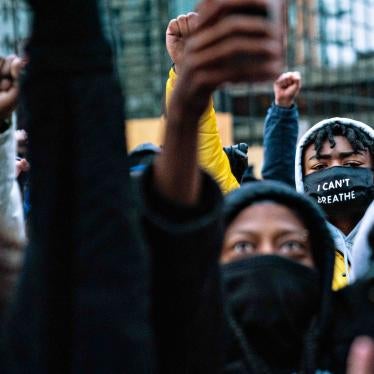Endorsed by: Article 36, Harvard Law School’s International Human Rights Clinic, Human Rights Watch, Norwegian People’s Aid, SEHLAC, and Women’s International League for Peace and Freedom.
Thank you.
This statement is delivered on behalf of six civil society organizations.
It has been 40 years since CCW Protocol III entered into force, and efforts to address the problems of incendiary weapons continue to fall short.
Since 2010, CCW states parties have raised the issue at their annual meetings. Expressions of concern about the weapons’ grave humanitarian effects have grown as have calls for dedicated time to address them. Yet except for a two-year interval, states parties have been unable to reach consensus on setting aside dedicated time to discuss the adequacy of Protocol III, the only legal instrument dedicated to governing incendiary weapons. It is time for that to change.
Incendiary weapons are exceptionally cruel weapons that cause immediate and long-term human suffering. They inflict excruciating burns and respiratory damage. Those who survive often experience lifelong psychological harm, extensive scarring, enduring pain due to muscle contractures, and socioeconomic exclusion.
While Protocol III seeks to reduce the incendiary weapons’ impacts on civilians, it has two major loopholes. First, by describing incendiary weapons as those “primarily designed” to set fires or burn humans, Protocol III’s definition of incendiary weapons excludes most multipurpose incendiary munitions, notably white phosphorus ones, that are “primarily designed” to create smokescreens or signal troops, yet have the same horrific incendiary effects.
Second, the protocol prohibits the use of air-dropped incendiary weapons in concentrations of civilians, but the provision on ground-launched incendiary weapons includes several caveats that weaken it.
Over the past 15 years, incendiary weapons have been used in numerous conflicts. Most recently, Human Rights Watch has reviewed visual evidence showing that there were at least 147 attacks in Ukraine using surface-fired incendiary weapons between February 2022 and October 2023. Human Rights Watch verified photo and video evidence that showed Syrian government forces using incendiary weapons on October 6, 7, 8, and 18, 2023.
Human Rights Watch verified videos of white phosphorus use by the Israeli military in Lebanon and Gaza on October 10 and 11, 2023, respectively. Videos showed multiple airbursts of artillery-fired white phosphorus over two rural locations along the Israel-Lebanon border and over the Gaza City port.
We call on states parties to take two actions at this CCW meeting to demonstrate its commitment to protecting civilians from the suffering caused by incendiary weapons.
First, states parties should agree to setting aside time to meaningfully discuss Protocol III. They should at a minimum approve the proposal for the incoming president of the 2025 Meeting of High Contracting Parties to hold informal consultations on Protocol III. Ideally, they should establish a separate agenda item for Protocol III as was done for 2017 and 2018.
Second, states parties should ensure the final document of this year’s meeting includes language on Protocol III and incendiary weapons. Such language was included in the final document for every annual meeting or review conference from 2011-2021, but it was removed last year due to the objection of one or a small number of states.
We recommend that states parties consider as a model the language used from 2016 to 2021. It notes concerns about reports of the use of incendiary weapons and condemns any use against civilians or civilian objects.
These two steps should be feasible and would represent progress in the CCW forum. They would reflect the position of the majority of states parties that have expressed views on the topic and allow for overdue consideration of a four-decade old protocol.
At the same time, they are modest measures and states parties should not forget that the ultimate goal is to ensure adequate humanitarian protections from the effects of incendiary weapons.
For more information on this topic, please see the new publication released this week by Human Rights Watch and Harvard Law School’s International Human Rights Clinic.
Thank you.







